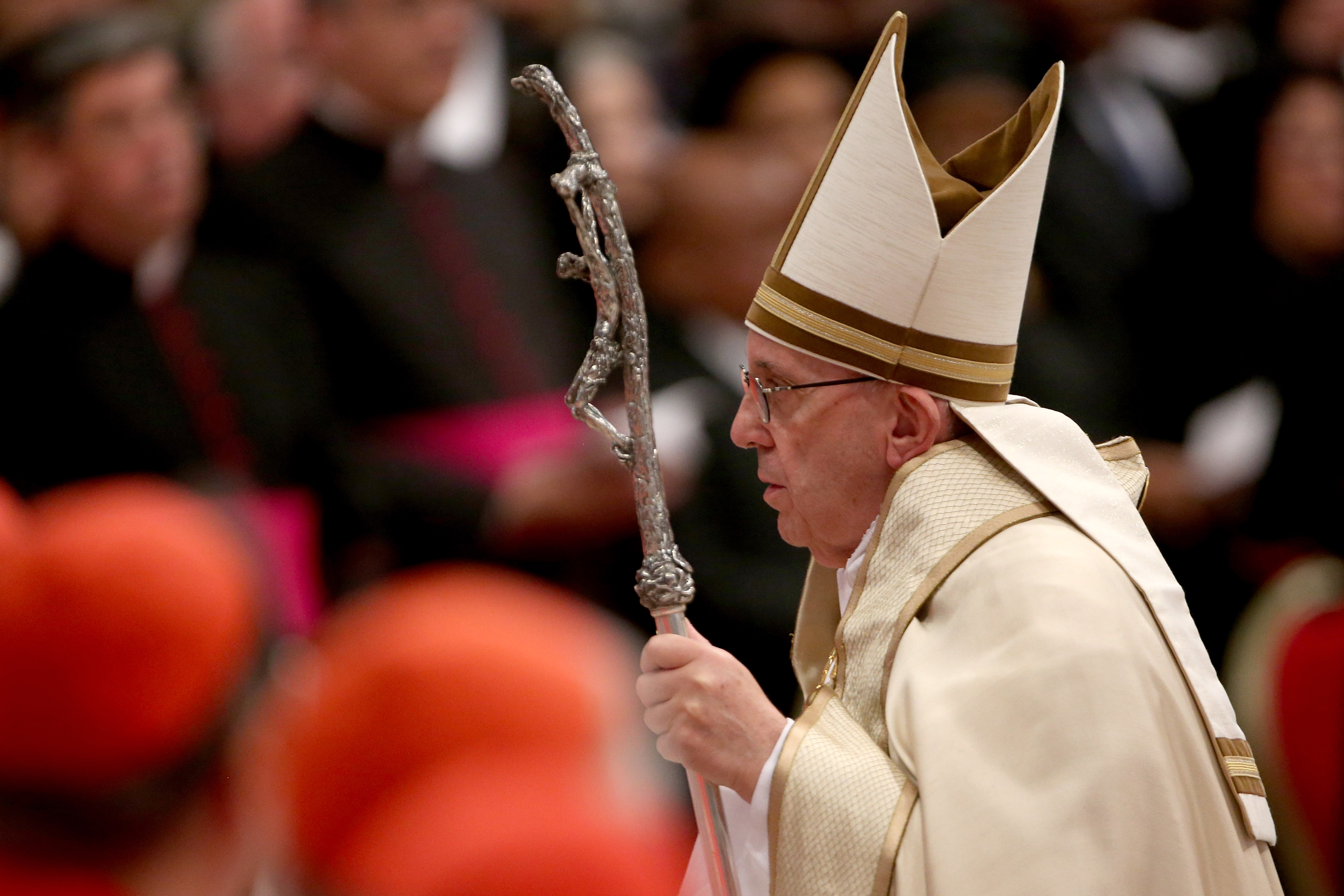With the death of Pope Francis, attention now turns to the selection of his successor. The next pope will be chosen in what is called a “conclave,” a Latin word meaning “a room that can be locked up,” or, more simply, “a closed room.”
Members of the College of Cardinals will cast their votes behind the closed and locked doors of the Vatican’s Sistine Chapel, famous for its
frescoes painted by Michelangelo. Distinguished by their scarlet robes, cardinals are chosen by each pope to elect future popes. A cardinal must be under the age of 80 to be eligible to vote in the conclave. Of the 252 members of the College of Cardinals, 138 are currently eligible to elect the new pope.
As a scholar of global Catholicism, I am especially interested in how this will be the most diverse conclave in the history of the Catholic Church.
For many centuries, the College of Cardinals was dominated by Europeans – Italians, in particular. In fact, the first time a non-European cardinal actually cast a ballot in a conclave was only in the 20th century, when Baltimore’s archbishop, James Gibbons, voted in the 1903 papal election. Now, the College of Cardinals has members from over 90 countries, with Francis having appointed nearly 80% of them.
/file/dailymaverick/wp-content/uploads/2025/04/GettyImages-163615880.jpg)
Holding a conclave to elect a pope is a tradition that goes back centuries. The practice was established in 1274 under Pope Gregory X in reaction to the chaos surrounding his own election, which lasted nearly three years. The tradition is old, but the results can be surprising, as when Francis himself was
in 2013 as the first non-European pope in almost 1,300 years and the first Jesuit pope ever.
Read more: Conclave – a riveting movie that transforms a papal election into a locked-room thriller
The conclave begins
Before the conclave, the College of Cardinals will meet in what are called “general congregations” to discuss issues facing the church. These general congregations will also be an opportunity for new cardinals and those from distant geographical locations to get to know their fellow cardinals.
This can be a time for politicking. In times past, the politicking was rumored to include bribes for votes, as was alleged in the election of Alexander VI, a Borgia pope, in 1492. Nowadays, it is considered to be bad form – and bad luck – for a cardinal to lobby for himself as a candidate. Buying votes by giving money or favors to cardinals is called “simony” and is against church law.
Two to three weeks after the papal funeral, the conclave will begin. The cardinals will first make a procession to the Sistine Chapel, where electronic jamming devices will have been set up to prevent eavesdropping and Wi-Fi and cellphone use. As they file into the chapel, the cardinals will sing, in Latin, the hymn “Come Holy Spirit.” They will then vow on a book of the Gospels to keep the conclave proceedings secret.
After these rituals, the Master of Papal Liturgical Celebrations will say out loud, in Latin, “Extra Omnes,” which means “Everyone Out.” The doors of the Sistine Chapter will then be locked, and the conclave will begin.
The voting process
The cardinals electing the pope will be seated in order of rank.
Usually, the dean of the College of Cardinals is seated in the first position. But the current dean – Cardinal Giovanni Battista Re – is over the eligible voting age and will not participate in the conclave. Instead, this papal election will be led by the Vatican’s secretary of state, Cardinal Pietro Parolin.
When the cardinals have assembled, nine will be chosen at random to run the election, with three of them being “scrutinizers” who will examine the ballots and read them aloud.
/file/dailymaverick/wp-content/uploads/2025/04/960px-Card._Mahonys_Scrutiny_Ballot_2013.jpg)
After writing down the name of their chosen candidate, the cardinals will bring their ballots to the front of the chapel and place them on a plate that is




 VATICAN CITY, VATICAN - NOVEMBER 19: Pope Francis attends the Ordinary Public Consistory at St. Peter's Basilica on November 19, 2016 in Vatican City, Vatican. Thirteen of the new Cardinals will be under 80 years and will be eligible to vote in a conclave. (Photo by Franco Origlia/Getty Images)
VATICAN CITY, VATICAN - NOVEMBER 19: Pope Francis attends the Ordinary Public Consistory at St. Peter's Basilica on November 19, 2016 in Vatican City, Vatican. Thirteen of the new Cardinals will be under 80 years and will be eligible to vote in a conclave. (Photo by Franco Origlia/Getty Images) /file/dailymaverick/wp-content/uploads/2025/04/GettyImages-163598609.jpg)
/file/dailymaverick/wp-content/uploads/2025/04/GettyImages-163616174.jpg)